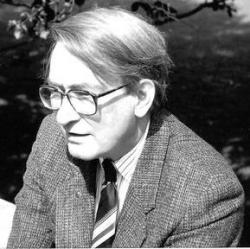
I write to nominate Bruce Trigger for the highest recognition in Canadian archaeology, the Smith – Wintemberg award. I do so with a sad heart of course because of his recent passing at such a young age and that of his wife Barbara, so soon thereafter. Bruce was our signpost in so many ways he contextualized archaeology within broader society not only for the Canadian public but on the world stage, he was our leading advocate for the creative middle ground in archaeological theory while serving as a critical architect of social evolutionary thought, he was an insightful historian of the discipline, he was our most important guide for understanding the power of archaeological knowledge and our societal responsibilities in using that knowledge, and while he was an Egyptologist who had broadened his work to include a cross-cultural analysis of the nature of early civilizations, he was also our foremost authority on the ethnohistory and archaeology of Aboriginal cultures in northeastern North America a true renaissance figure. He was simply one of the most influential archaeologists of the twentieth century.
Many of his abilities and roles resulted in unique and important impacts on Canadian archaeology. His arguments for the middle ground, for example, emanating from one of the country’s most influential research institutions, appears to have reinforced the resistance of many Canadian archaeologists to any one particular theoretical perspective and indeed represented a force against what Jane Kelley has called, disciplinary "presentism," where anything over five or ten years old is considered not worth citing. While he always considered carefully new theoretical suppositions, Bruce’s commitment to the theoretical middle ground and his insistence on the application of theory to data in his own work, resulted in some of the highest quality Canadian-based archaeological scholarship ever. His use of multiple bodies of theory at the broadest level possible, for example, was instrumental in his exceptional comparative analysis of seven ancient societies in Understanding Early Civilizations. This volume demonstrated forever that a theoretically informed pluralism represents the best way to appreciate the complexity of the past.
Trigger also lead the Canadian search to define and understand archaeology as part of the wider world. In particular, even if Canadian archaeologists are not overtly committed to theoretical perspectives, many of us have been cautioned by Bruce’s words to bring to our texts an acute awareness of the power and responsibilities that come with the production of archaeological knowledge. Not only did he have strong political views on contemporary issues, such as who owns the past, but he demonstrated how archaeology has been unable to achieve, at any point in its history, complete freedom from political biases. In one of his masterpieces, A History of Archaeological Thought, Cambridge University Press’s all-time best-seller in archaeology and now in its second considerably revised edition, an analysis of the social and political contexts in which archaeological theory was developed and deployed was a central theme. In this vein, he strongly cautioned Canadians and their neighbours that archaeological research and interpretations could be used to reinforce prejudicial positions at the expense of Canadian indigenous peoples. He worked to counter those trends. In two of his most frequently cited works, The Children of Aataentsic and Natives and Newcomers, he combined history, ethnography, and archaeology in a unique fashion, giving Aboriginal peoples their own voices, and making the analyses appealing to all thinking Canadians. It is for these reasons that these works enjoyed significant influence outside of scholarly circles and well beyond Canada. His active protest against Canadian Museums, in support of the First Nation’s boycott of “The Spirit Sings” in 1988, helped a conservative academy come to an understanding of how little Canadian society was doing to resolve the economic, social and political problems that were facing indigenous peoples. For his ground-breaking works and ethical stance, Trigger was adopted as a honourary member of the Great Turtle Clan of the Wendat Confederacy an honour to which he often referred as his most meaningful. In later years, Bruce worked with Eldon Yellowhorn, the first Aboriginal PhD graduate in archaeology in Canada. Eldon has gone on to teach at Simon Fraser University and represents an articulate spokesperson for an internalist archaeology that will draw on Aboriginal cultural traditions and oral narratives in the study of local history, searching for their reflections in the archaeological record.
As one of the editors of the festschrift in his honour, The Archaeology of Bruce Trigger: Theoretical Empiricism, I noticed a glaring omission in his list of distinguished honours and awards. While he had been awarded a fellowship in, and Innis-Gérin Medal from, the Royal Society of Canada, the Cornplanter Medal for Iroquois Research, the Prix Victor Barbeau and Prix Leon-Gérin, five honourary doctorates, numerous invitations to deliver distinguished lectures, many prestigious book awards, the Lifetime Achievement Award of the Society for American Archaeology and an appointment as an Officer of the Order of Canada, his own national archaeological association (CAA) had failed to honour him. I know through discussions with him that he would have valued an award from the Canadian Archaeological Association because of his dedication to Canada and his steady commitment to the nation having declined many offers to teach elsewhere in the world. He was a truly great Canadian archaeologist and deserves our highest recognition by our national organization.
Yours very sincerely,
Ronald F. Williamson, PhD
April 30, 2007
